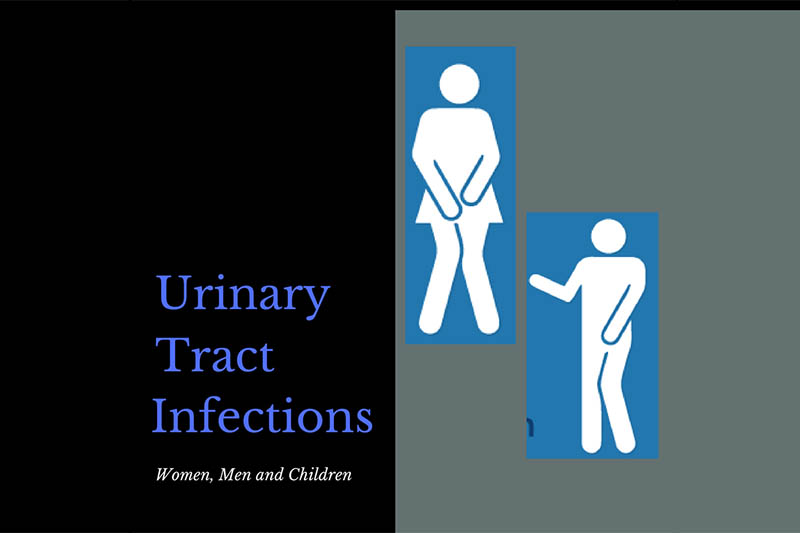
What are UTI’s? Urinary Tract Infections
Do you… Frequently or urgently need to urinate Often only pass small amounts of urine Have Pain or burning sensation when urinating These can be symptoms of urinary tract infections. There
Ayurvedic medicine (also called Ayurveda) is one of the world’s oldest holistic (whole-body) medical systems. It originated in India more than 3,000 years ago and remains one of the country’s traditional health care systems. Its concepts about health and disease promote the use of herbal compounds, special diets, and other unique health practices. India’s government and other institutes throughout the world support clinical and laboratory research on Ayurvedic medicine, within the context of the Eastern belief system. But Ayurvedic medicine isn’t widely studied as part of conventional (Western) medicine.
It is based on the belief that health and wellness depend on a delicate balance between the mind, body, and spirit. The primary focus of Ayurvedic medicine is to promote good health, rather than fight disease. But treatments may be recommended for specific health problems.

According to Ayurvedic theory, everything in the universe — living or not — is connected. Good health is achieved when your mind, body, and spirit are in harmony with the universe. A disruption of this harmony can lead to poor health and sickness.
For followers of Ayurveda, anything that affects your physical, spiritual, or emotional well-being can cause you to be out of balance with the universe. Some things that can cause a disruption include
*Genetic or birth defects *Injuries *Climate and seasonal changes *Age *Emotions
How your body works to keep you healthy and your unique physical and psychological characteristics combine to form your body’s constitution, or prakriti. Your prakriti is believed to stay the same for your entire life. However, how you digest food and eliminate waste can influence it.
Every person is made of a combination of five basic elements found in the universe
Space – Air – Fire – Water – Earth
These elements combine in the human body to form three life forces or energies, called doshas. They control how your body works. The three doshas are:
Everyone inherits a unique mix of the three doshas. One dosha is usually more dominant. Each dosha controls a different body function. It is believed that your chances of getting sick are linked to the balance of your doshas.
Vata dosha (space and air) is thought to be the most powerful of all three doshas. It controls very basic body functions, such as how cells divide. It also controls your:
Things that can disrupt this dosha are:
If vata dosha is your main life force, you are more likely to develop:
The pitta dosha (fire and water) controls:
Things that can disrupt this dosha are:
If pitta dosha is your main life force, you are more likely to develop:
The kapha dosha (water and earth) controls:
Things that can disrupt this dosha are:
If kapha dosha is your main life force, you are more likely to develop:
Some practitioners may have a great deal of training or experience, others may not. Do your homework when choosing an Ayurvedic practitioner. Ask about his or her training and experience.
In India, Ayurvedic training can take five or more years. Graduates receive either a Bachelor of Ayurvedic Medicine and Surgery (BAMS) or Doctor of Ayurvedic Medicine and Surgery (DEMS) degree.
At your first visit, the practitioner will examine you and try to determine your primary dosha and the balance among the others.
You will be asked questions about your:
Treatment depends on your unique prakriti, your primary dosha, and the balance between all three of them.
A main goal of Ayurvedic medicine is to cleanse your body of undigested food called ama, which can stick to the inside of your body and make you sick. This cleansing process is called panchakarma. It is used to reduce any symptoms and reestablish harmony and balance.
Panchakarma may include
Other treatments may also be recommended to:
The treatments may include
Some research has shown that meditation works very well in relieving stress and reducing the risk for heart disease risk factors. Other studies are looking into the ability of Ayurvedic herbs to treat cancer.
Several Ayurvedic herbal treatments have been studied for a variety of medical conditions. An example is ashwagandha (Withania somnifera) that has anti-depressant, anti-anxiety, and, possibly, anti-cancer effects.
Recently, scientists have reported that Ayurveda may be a valuable tool in managing obesity and diabetes. However, a Cochrane review found there is insufficient evidence to recommend Ayurveda for the routine treatment of diabetes.
The FDA has warned that one in five Ayurvedic medicines contain toxic metals, including:
A study published in The Journal of the American Medical Association found that several Indian-manufactured Ayurvedic products could “result in lead and/or mercury ingestions 100 to 100,000 times greater than acceptable limits.”
Lead, mercury, and arsenic are heavy metals. They can cause life-threatening illness, especially in children.
The FDA does not review or approve Ayurvedic products. But the agency has put an import alert on certain Ayurvedic products since 2007. This prevents the products from entering the country. However, many customers purchase the products over the Internet. Such sales are harder to monitor.
Always tell all your doctors about the medicines you take, including herbs, supplements, minerals, spices, and other products. They can sometimes interact with each other, increasing your risk for serious health problems.
Ayurvedic medicine uses a variety of products and practices. Ayurvedic products are made either of herbs only or a combination of herbs, metals, minerals, or other materials in an Ayurvedic practice called rasa shastra. Some of these products may be harmful if used improperly or without the direction of a trained practitioner.
Ayurvedic products have the potential to be toxic. Many materials used in them haven’t been studied for safety in controlled clinical trials. In the United States, Ayurvedic products are regulated as dietary supplements. As such, they aren’t required to meet the same safety and effectiveness standards as conventional medicines. For more information on dietary supplement regulations, see the National Center for Complementary and Integrative Health’s (NCCIH) fact sheet Using Dietary Supplements Wisely.
In 2008, an NCCIH-funded study examined the content of 193 Ayurvedic products purchased over the Internet and manufactured in either the United States or India. The researchers found that 21 percent of the products contained levels of lead, mercury, and/or arsenic that exceeded the standards for acceptable daily intake.
Other approaches used in Ayurvedic medicine, such as massage, special diets, and cleansing techniques may have side effects as well. To help ensure coordinated and safe care, it’s important to tell all your health care providers about any Ayurvedic products and practices or other complementary and integrative health approaches you use.
Most clinical trials of Ayurvedic approaches have been small, had problems with research designs, or lacked appropriate control groups, potentially affecting research results.
No states in the United States license Ayurvedic practitioners, although a few have approved Ayurvedic schools. Many Ayurvedic practitioners are licensed in other health care fields, such as midwifery or massage. For more information on credentialing complementary health practitioners, see the NCCIH fact sheet

Do you… Frequently or urgently need to urinate Often only pass small amounts of urine Have Pain or burning sensation when urinating These can be symptoms of urinary tract infections. There
Disclaimer – Our intent is not to diagnosis but to offer information on therapy choices and practitioners. Information on this site is intended general educational purposes only. Any statements made are carefully referenced and any information, products or services discussed are not intended to diagnose, cure, treat or prevent any disease or illness. Please consult a healthcare practitioner before making a choice.